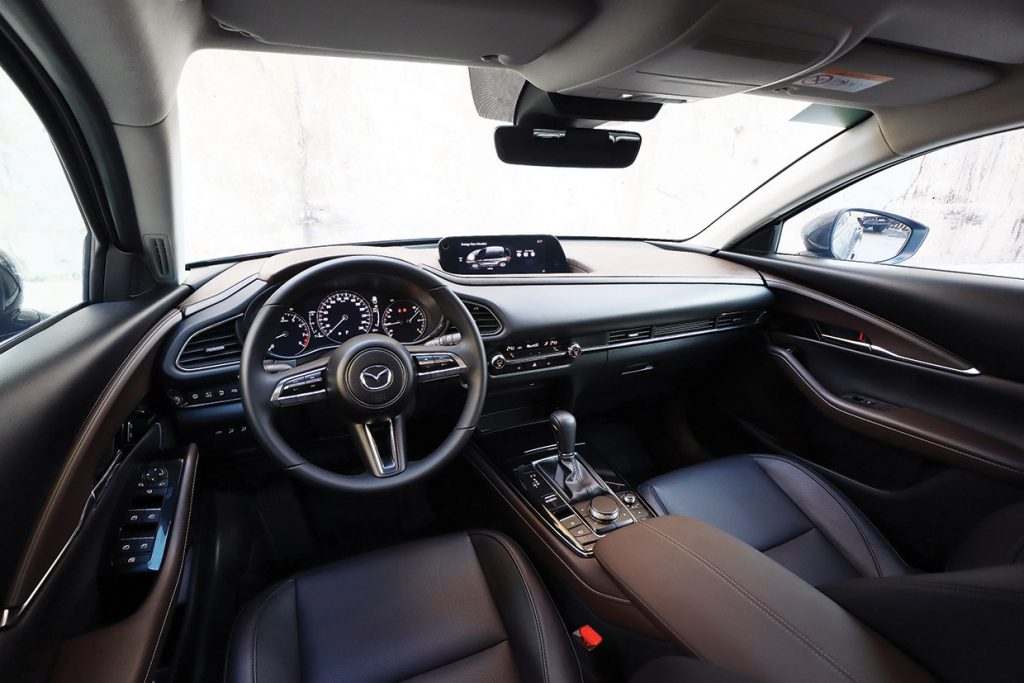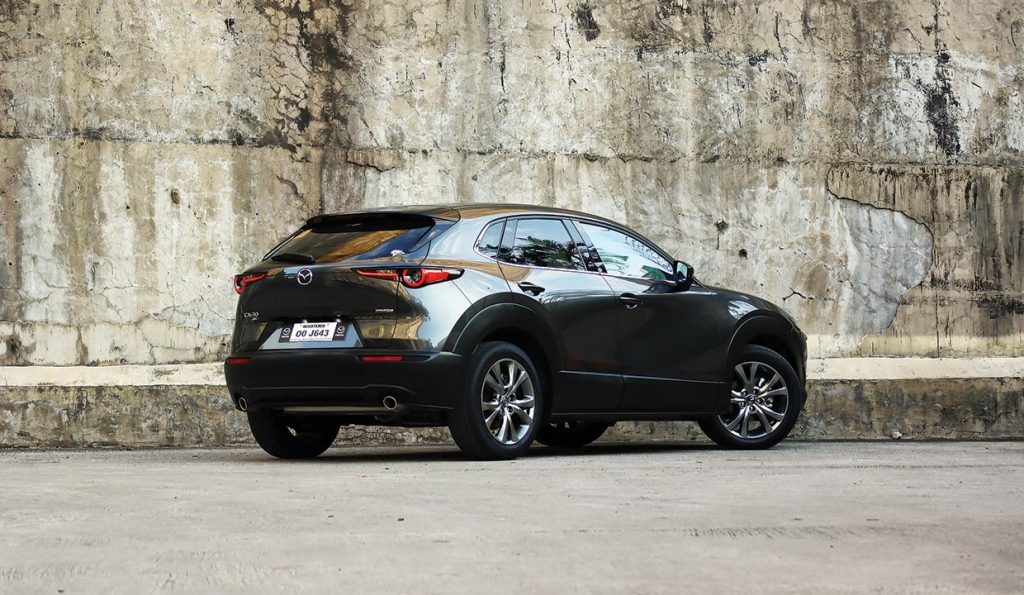Hubris. That’s what landed Mazda into trouble with the CX-3. At the time of its launch five years ago, it seemed they could do no wrong—their sweeping KODO design coupled with the Skyactiv powertrain delivered them one critical hit after another. But when it was time to come up with a subcompact crossover, they read the market wrong. Too small and too expensive—it didn’t deliver the numbers Mazda thought were there.
Fast forward to 2020, and Mazda has come up with this: the first-ever CX-30. As far as naming conventions go, this badge leads to some confusion since the carmaker’s always used a single-digit number to signify a model’s size and position in its line-up. The odd designation aside, its market positioning is clear: it sits below the CX-5, in a field filled with models made up of a random string of consonants—the Subaru XV and Honda HR-V. And while the CX-3 remains available, it’s the CX-30 that hits the sweet spot for those wanting a Goldilocks-sized crossover.

Like the Mazda3 on which it’s based on, the CX-30 is crisply styled—a reflection that Mazda’s Evolved KODO styling can strike twice. It’s definitely the best-looking crossover out there, even if the abundance of black plastic cladding make it look a bit heavy-handed, especially from the back. Oh, and it’s not just a case of raising the Mazda3 and calling it a day, either. It doesn’t look it, but the CX-30 is actually shorter—around 70 mm shorter than the Sportback.
Remarkably, the shortened length and wheelbase haven’t affected the CX-30’s interior room. As with the Mazda3, the front seats are superb, with nice, supportive thrones and a tiller that simply falls right into hand. Moreover, there’s a wide range of adjustment available meaning drivers of all shapes and sizes will be able to get comfy. Things are less stellar at the back (remember, the Mazda3 isn’t exactly spacious), but headroom is fine for average-sized Filipinos. Plus, nifty touches like tilting the floor make it more hospitable for long stints as a passenger than its Sportback sibling. The cargo hold’s pretty solid too at 430 liters (up 72 liters from the Mazda3), but it’s worth noting that there are no clever tricks, except of course for this AWD variant’s power tailgate.
The CX-30’s user interface is more or less the same as the Mazda3 which makes it smart, easy-to-use, and operable almost completely by touch. In this era of ever-larger and more complicated touchscreens, the knobs and buttons here actually feel like a breath of fresh air. It’s devoid of unnecessary complication too—something that the Germans seem to specialize in recently. Furthermore, no other crossover at this price point can even get close to the CX-30 in terms of quality and plushness. From its classy two-tone appearance, soft-touch plastics with lashing of leatherette, crisp controls, and soft, perforated leather—this is one fine place to be.

One of the biggest misses of the CX-3 before was down to Mazda’s decision to dial down the power of its 2.0-liter Skyactiv-G (it was since corrected in the 2020 refresh). Thankfully, they didn’t repeat the same error here. Putting down 155hp and 200Nm of torque, it generates the same sort of power as the current Mazda3.
However, because of the all-wheel drive system, there’s a 133kg penalty imposed on the CX-30. Surprisingly, the difference isn’t day and night—it’s responsive, tractable, and quick with the 6-speed automatic always a willing ally. Plus, fuel economy isn’t too bad—7.81 km/L during heavy urban traffic, 10.1 km/L in light urban traffic, and 14.28 km/L on the highway. In fact, the only time the weight is felt is when the accelerator’s pushed down—it doesn’t build up speed as fast as the Mazda3.
Like its platform-mate, the CX-30 doesn’t particularly feel quick off-center, but give the steering wheel a couple of more tugs, and it comes across as precise, processive, and predictable. It darts through twists and turns with minimal body lean despite its generous 175mm ground clearance, while still managing to absorb various thuds and crashes. It brakes in the same smooth, fluid fashion as well. Undeniably, it’s also far more pliant than the Mazda3, which makes it the better way to rack up mileage. On the flipside, it does seem to run out of grip earlier, and that’s perhaps down to the comfort-oriented Dunlop tires installed as standard equipment.
At P1.990 million, the CX-30 AWD Sport isn’t positioned for volume, since the larger CX-5 AWD Sport is priced the same, down to the past peso—and that’s with the latter being equipped with a 2.5-liter engine making 40hp and 52Nm of torque more. The practical set will dismiss Mazda’s newest small crossover, and go straight for the CX-5. Without a doubt, this will happen 90 percent of the time.
For the 10 percent that’ll stay put, they’ll see the CX-30 for its greatest strength: its ability to drive and feel as luxurious as premium brands without the premium price tag. It certainly sounds like hubris on Mazda’s part once again, and only time will tell if they got things right; but as far as crossovers go, the CX-30 delivers the right combination, and delivers them with a clear message to the people who’ll understand.

